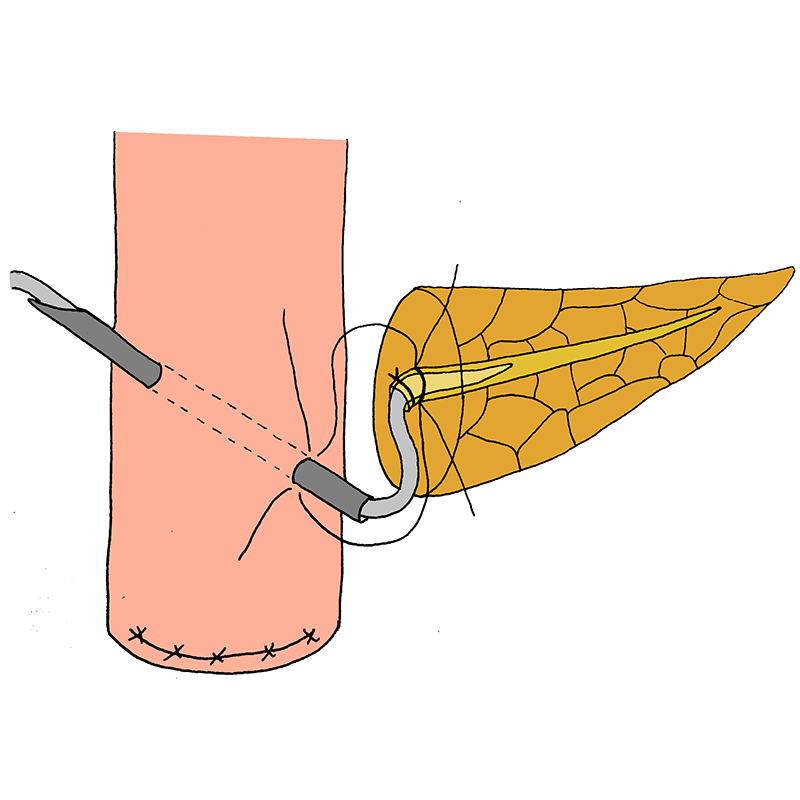A stent is inserted into the main pancreatic duct and fixed with 2 sutures; these sutures are preserved. A 10-gauge intravenous catheter is passed through the anterior and posterior walls of the jejunum. Through this catheter, the pancreatic stent is introduced and the main pancreatic duct is invaginated into the jejunal lumen for about 1 cm.
Pancreatic duct-invagination end-to-side pancreatojejunostomy
- A stent is inserted into the main pancreatic duct and fixed with 2 sutures; these sutures are preserved.
- A 10-gauge intravenous catheter is passed through the anterior and posterior walls of the jejunum. Through this catheter, the pancreatic stent is introduced and the main pancreatic duct is invaginated into the jejunal lumen for about 1 cm.
- The pancreatic duct is anchored to the adjacent serosa, using the two preserved sutures.
- The other side of the pancreatic stent is secured on the opposite side of the jejunal wall; no pancreatic parenchymal sutures are placed.
- The pancreatic stump is fixed to the jejunal seromuscular wall with fibrin glue spray.
- Fujino Y, Suzuki Y, Matsumoto I, et al. Long-term assessments after pancreaticoduodenectomy with pancreatic duct invagination anastomosis. Surg Today. 2007;37:860-866.
- Kamoda Y, Fujino Y, Matsumoto I, Shinzeki M, Sakai T, Kuroda Y. Usefulness of performing a pancreaticojejunostomy with an internal stent after a pancreatoduodenectomy. Surg Today. 2008;38:524-528.
- Suzuki Y, Fujino Y, Tanioka Y, et al. Selection of pancreaticojejunostomy techniques according to pancreatic texture and duct size. Arch Surg. 2002;137:1044-7; discussion 1048.



